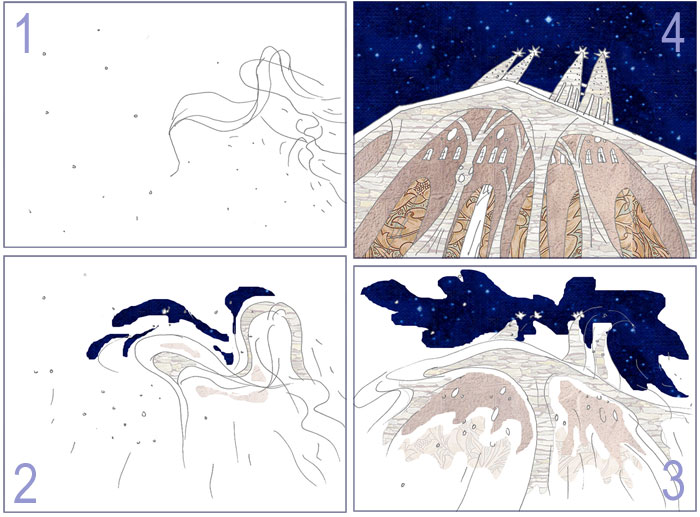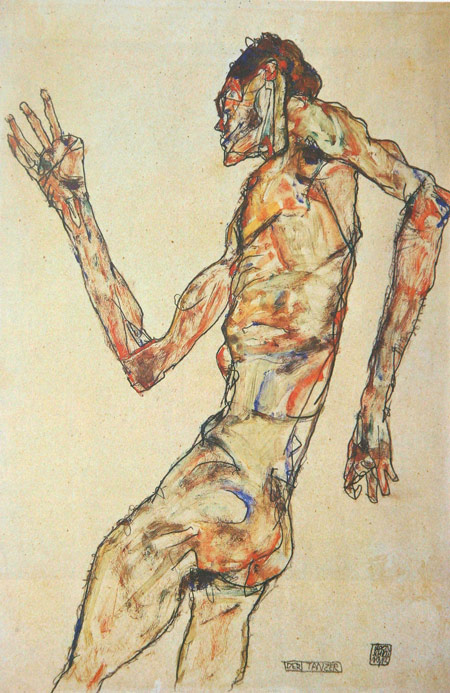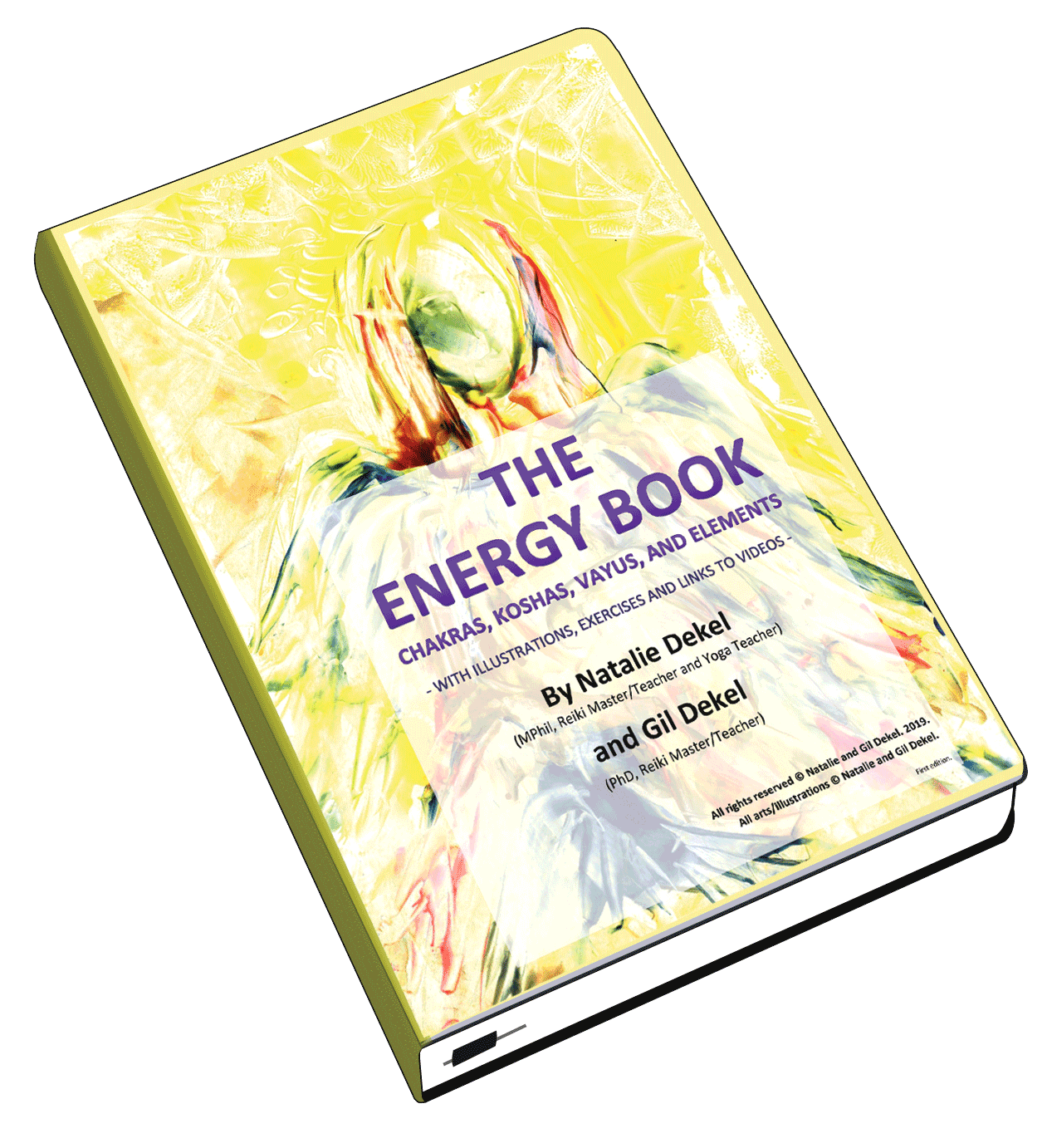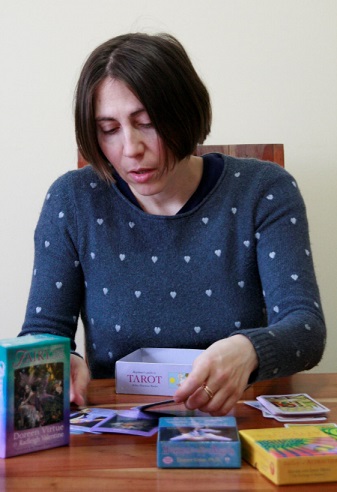by Natalie Dekel.
In this paper I will reflect on the connection between lines in art works, the artist’s personality and the choices they make in the creative process. I will offer examples from my work as a painter/animator and a researcher. This paper was presented at the 4th International Conference on the Arts in Society in conjunction with The 66th Venice Biennale, Italy (July 2009).
Video 1: Paper presentation ‘Lines of the Self’, 2009, Natalie Dekel.
I would argue that the ‘identity’ of an artist or ‘who the artist is’, often is described in the literature as an individual who has certain skills and a way of visually presenting ideas. This definition is limited, because it doesn’t take into an account the artist’s personal luggage and experiences that s/he brings with them.
The ‘skill’ itself is only a ‘dry’ application, and more often than not art is beyond the skill. Artwork is about the person who created it, not about the skill… It’s about what the artists bring with them to the work, and this is why it is so important to understand the artist and the choices they make while making art.
The literature often focuses on the artwork, and from the artwork there might be some understandings about who the artist is or who the author is. This seems a ‘round-about’ way of talking about somebody’s identity through what they have created, instead of how they created the work… When artists complete creating art work it is as if they got rid of a part of something that was there, and now they are ready to explore another part. So it is important to understand where the process starts and how it is brought into the art.
For example, when you are trying to learn what it is like to draw a ‘snow snowy’, you have to become the snow itself… you feel it so much that it becomes a part of you. And then when you stand back, looking at the finished painting, you may feel that ‘it now feels somebody else’s work. It is independent’. The painting is a part of you but a part which is now distant from you. I have found that it is best to observe processes and decisions that artists make, in the actual act of doing so, not after.
But, how do you approach that observation, and how do you actually find who you are, as an artist, while you create art and make decisions? My method is to take apart the experiences of making art, and observe its elements. I have taken the elements of line (the way I used line in my works, and other artists’ works), and the element of colour. In this paper I will explore the issue of line only.
Let us examine line in art. In the following still images from my animation film The Truth (2004), I have created a metamorphosis from a dot to a castle. Obviously there are much more images in-between, in the animation film. Here you can see four still images, where a line starts from nothing, and becomes something concrete, a castle:
When you come to the empty space, the blank page, you start by observing what is happening in it, and slowly a photographic image of three dimensions grows until it becomes a whole illusion of an object in space. Each line, especially when you create animation films, produces a whole experience, because the simple line itself changes, so you observe the same line evolving. This evolution of the line in animation film is much more prominent than in still image.
However this evolution is not linear, and is not a simple line ‘growing’ into shape. Each line holds a unique essence and does not ‘change’ into something else. As we know, we cannot create the exact same line twice, as there would always be slight changes, some differences. This is because of the way you apply the line, your thoughts, the way you bend above the table for several hours. Even the material we use; the paper, the pen, all change as we are working, and they become part of that line. Each line holds an essence of resemblance and difference at the same time.
Line is a small story about the artist. It is like a small signature, a small statement. And it coalesces and floods into something else – becoming a living history. When we look at the line in Egon Schiele’s painting The Dancer (1913) we are looking at an image which is still; a drawing. However, we can see the tension in one place on the painting, a rhythm in another. The dance is not in the pose because the pose is cut off the paper. The dancer is disabled in the image, by the fragmentation. But the dance is there in the line itself, in the way that it is applied on the paper, in the way the line itself is dancing. You can almost feel the sensitivity of the line. It is like a living creature, talking for itself almost.
This is paradoxical because you are the author of the line, as the artist, and yet the line is alive and on its own accord. The line has its own personality. This kind of a ‘talk’, especially when painting (when you try to decide what you want from the painting to become) is really a conversation. The line talks back to you, saying to you: “No, that’s how it will work, because this how the materials respond best”… That process is almost alchemical.
More so, on one hand line naturally distinguishes something from nothing; it is a border, a frame. On the other hand it is in itself a language, so it is not only a barrier, but a communication. Line creates the spaces, which become living creatures in themselves. This enables different levels of communication with the work.
Michelangelo once said that if you take a piece of marble, the sculpture is already in it. All you have to do is unfold it by taking parts away. I think it is the same with line. Once you take a pen it is like magic. It already has everything in it, and all you need to do is follow it and see what will happen. Everything is contained in a blank paper, and all you need to do is to discover it.
However, you are still a mediator as an artist. It is your personal contribution that enables the work. The pressure that you apply on the pen and the posture have their effect on the work. The physical existence of you as a mediator creates the impact and the final effect. The artist is at a dialogue with the work. Once there is but a dot on the space, already there is a personality evolving. The dot got a presence in space that has to be referred to by the artist. I think this issue is not studied enough in the academic research. I have not seen a research where people explore what it means to be a dot in the space – exploring the identity of a dot – and how the artist refers to it. So, once I completed my animation film The Truth (2004) I decided to ‘interview’ my animated characters who appeared in the film. I have produced another animation film – an interview animation, Reflections in a Lightbox (2006), where I have asked my characters: what it’s like to become animated?; what it’s like to become a horse when you start as a line, and you are suspended for twelve frames per second, until you finally get the move down? It was fascinating to learn about the animated reality from a different perspective. It is like talking to yourself but not, because the characters, the lines, are all individual somehow.
I think that the whole process, from a scratch of the ink you make and the colour of the paint, bring about a presence onto the work, and this presence is uniquely yours as the artist, even if you haven’t ‘done’ anything with it – just revealed it. With a single mark on the paper the silence of the paper has gone, and automatically new relations are formed, and a dialogue begins.
3 August 2010.
© Natalie Dekel.




 - Reading with Natalie, book here...
- Reading with Natalie, book here...
agreed